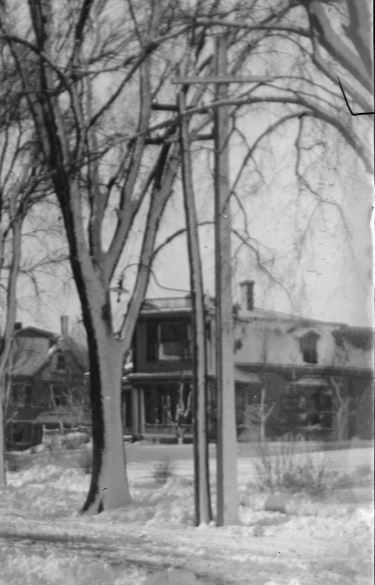Hingham, MA, Municipal Lighting Plant, 1902, Changeover to Square Chestnut Poles
By Joe Maurath, Jr.; posted June 26, 2020
View Original: Click to zoom, then click to magnify (375 x 585) 46KB

|
As recently discussed previously within this album, hard pine poles were becoming a problem with utilities across Massachusetts and elsewhere around the turn of the century. They were beginning to decay, especially near and at their bases, making them unsafe and prone to breaking. A pole replacement program was initiated by the forementioned town-owned electric utility in 1901. Above is an image of a changeover in progress during the following year. The light plant's general manager stated (in 1902) that "in addition to replacing the problemsome hard pine poles that were within the Light Plant system with chestnut ones, it was deemed necessary that the latter be at least 35 to 40 feet high in order so that the town's electrical wires had enough clearance from the wires belonging to the street railway and telephone company. This provided much more safety and the additional wire spacing reduced outages caused by circuits crossing and touching each other, especially during inclement weather." Operating an electric utility efficiently and in a cost-conscious manner is very important. In other words, a municipal power company's rates should be equal to or lower than those of neighboring privately-owned ones. And town-owned utilities should be highly dependable and provide superior customer service. In providing excellent and up-to-date street lighting for the community, the Hingham utility reported during 1902 that "further improvements in Hingham's street lighting service were made during the year thanks to three new constant current transformers added to the East Weymouth generating station." Each transformer regulated each of the town's three street lighting loops, providing steadier light and fewer bulb burnouts. This equipment and the electricity the town bought their power from was from a private utility in an adjacent town. Also of interest...the utility's transformer upgrading program was progressing very well, reducing line losses to 36 percent (compared to 43 percent in 1900). Many electric utilities across the United States were undertaking similar projects through the early 1900s. |